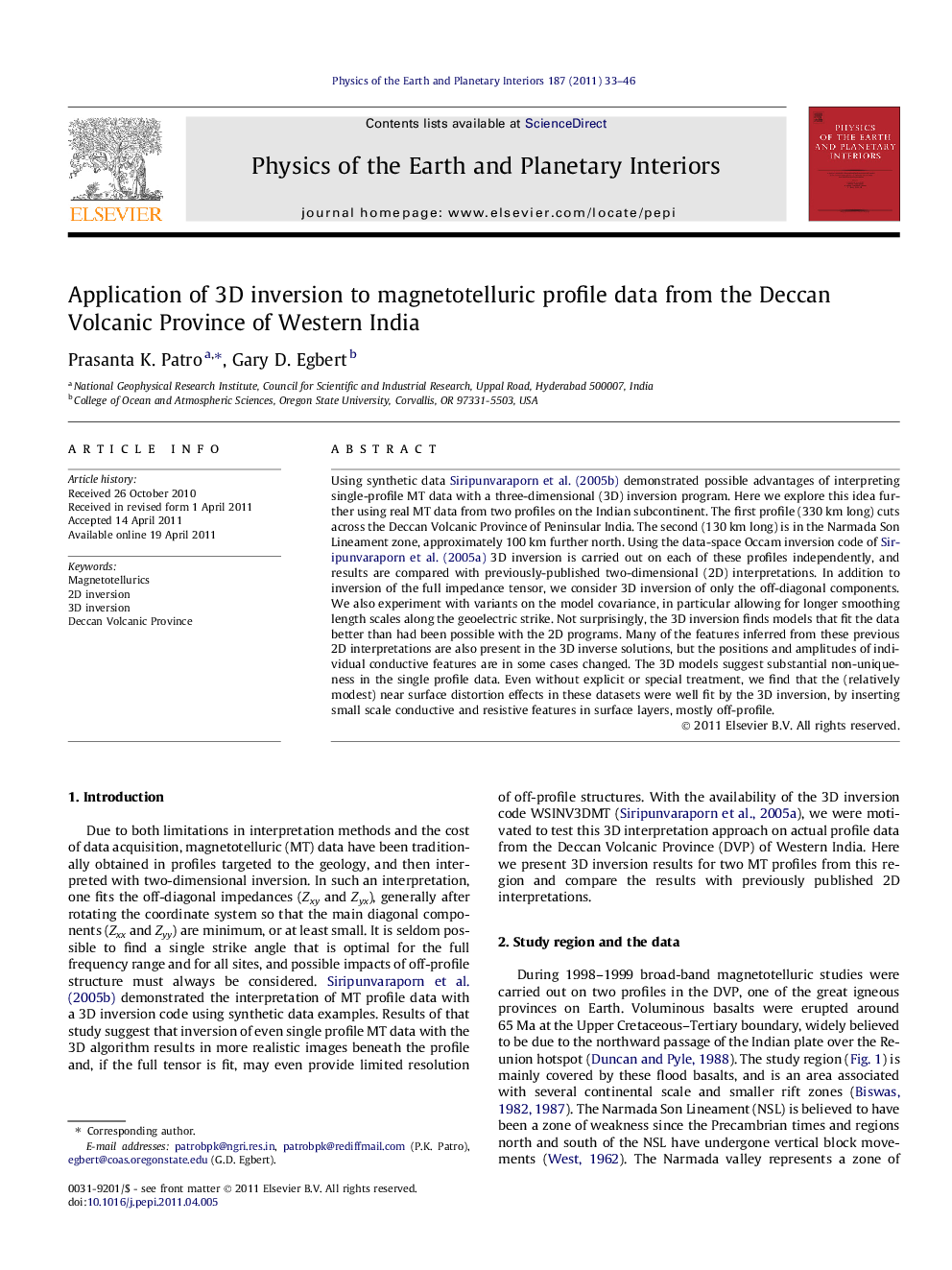| کد مقاله | کد نشریه | سال انتشار | مقاله انگلیسی | نسخه تمام متن |
|---|---|---|---|---|
| 4742063 | 1641545 | 2011 | 14 صفحه PDF | دانلود رایگان |

Using synthetic data Siripunvaraporn et al. (2005b) demonstrated possible advantages of interpreting single-profile MT data with a three-dimensional (3D) inversion program. Here we explore this idea further using real MT data from two profiles on the Indian subcontinent. The first profile (330 km long) cuts across the Deccan Volcanic Province of Peninsular India. The second (130 km long) is in the Narmada Son Lineament zone, approximately 100 km further north. Using the data-space Occam inversion code of Siripunvaraporn et al. (2005a) 3D inversion is carried out on each of these profiles independently, and results are compared with previously-published two-dimensional (2D) interpretations. In addition to inversion of the full impedance tensor, we consider 3D inversion of only the off-diagonal components. We also experiment with variants on the model covariance, in particular allowing for longer smoothing length scales along the geoelectric strike. Not surprisingly, the 3D inversion finds models that fit the data better than had been possible with the 2D programs. Many of the features inferred from these previous 2D interpretations are also present in the 3D inverse solutions, but the positions and amplitudes of individual conductive features are in some cases changed. The 3D models suggest substantial non-uniqueness in the single profile data. Even without explicit or special treatment, we find that the (relatively modest) near surface distortion effects in these datasets were well fit by the 3D inversion, by inserting small scale conductive and resistive features in surface layers, mostly off-profile.
► 3D inversion is carried out on MT profile data (full-tensor and off-diagonal) from DVP.
► The 3D inversion finds models that fit the data better than had been possible with the 2D inversion.
► Features inferred from 2D are also present in 3D; in some cases the positions and amplitudes are changed.
► Surface distortion effects of the MT data were fit by inserting small scale features in the surface layer.
Journal: Physics of the Earth and Planetary Interiors - Volume 187, Issues 1–2, July 2011, Pages 33–46